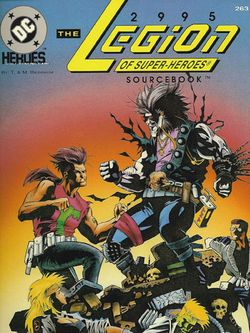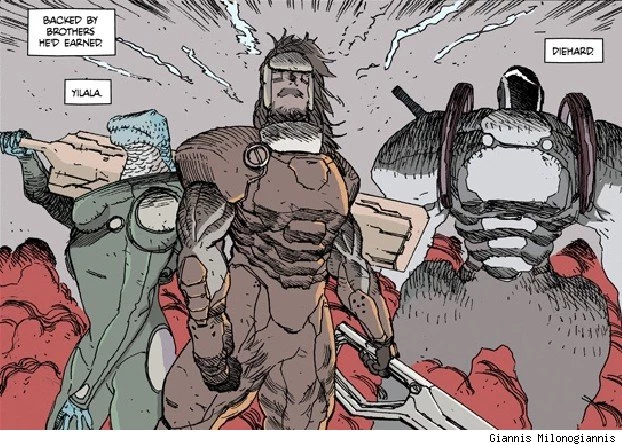We continue our examination of Jim Starlin's Dreadstar Saga with The Price. The earlier posts in the series can be found here.
Eclipse Graphic Album Series #5 (October 1981) Story & Art by Jim Starlin
Synopsis: The Empirical Galaxy is in the midst of a 200 year-old war between two super-powers: The Monarchy and the Instrumentality. Altarix is a world of the Instrumentality, home to its mystic Order of Vieltoor. It's also the home of Lord High Bishop Darklock and his brother Ajar'l Darklock.
Ajar'l is a tax lawyer, ferreting out those who seek to defraud the Instrumentality. Where his brother is interested in the mystical, Ajar'l is concerned with the practical. All things considered, Ajar'l doesn't get the sort of death he would've expected:
Darklock senses his brothers death and quickly goes to the scene. The police tell him it was a murder committed by fringe religious cultists. Darklock is skeptical that it was a human crime. The police assure him that supernatural involvement was ruled out by one of the cardinals of the Papal Council who has already been there.
Darklock does to the Lord Papal to request a leave of absence:
The Lord Papal know's Ajar'l's death smacks of demonic attack, and he warns Darklock against engaging in unauthorized vengeance.
When he's gone, Cardinal Spyder asks Lord Papal why he granted Darklock leave. He knows he plans to seek vengeance. Lord Papal did so because he senses what Darklock sensed--and more:
Darklock is a powerful and ambitious man. Lord Papal sees this as a chance to get read of a potential rival.
TO BE CONTINUED...
Ajar'l is a tax lawyer, ferreting out those who seek to defraud the Instrumentality. Where his brother is interested in the mystical, Ajar'l is concerned with the practical. All things considered, Ajar'l doesn't get the sort of death he would've expected:
Darklock senses his brothers death and quickly goes to the scene. The police tell him it was a murder committed by fringe religious cultists. Darklock is skeptical that it was a human crime. The police assure him that supernatural involvement was ruled out by one of the cardinals of the Papal Council who has already been there.
Darklock does to the Lord Papal to request a leave of absence:
The Lord Papal know's Ajar'l's death smacks of demonic attack, and he warns Darklock against engaging in unauthorized vengeance.
When he's gone, Cardinal Spyder asks Lord Papal why he granted Darklock leave. He knows he plans to seek vengeance. Lord Papal did so because he senses what Darklock sensed--and more:
Darklock is a powerful and ambitious man. Lord Papal sees this as a chance to get read of a potential rival.
TO BE CONTINUED...
Things to Notice:
This graphic novel is billed as "A new Metamorphosis Odyssey book" thought there isn't anything in its setting or characters to tie it to that other work (yet).
An oppressive church state is a trope Starlin has worked with before. The Church of Universal Truth was the main bad guy of Starlin's "Magus Saga" at Marvel. The use of the term "Instrumentality" may have it's origins in Cordwainer Smith's Instrumentality of Mankind.
- In the Dreadstar-verse, the Earth was destroyed in 1980.
- The original story was in black and white. It was later colorized and reprinted as Dreadstar Annual #1.
This graphic novel is billed as "A new Metamorphosis Odyssey book" thought there isn't anything in its setting or characters to tie it to that other work (yet).
An oppressive church state is a trope Starlin has worked with before. The Church of Universal Truth was the main bad guy of Starlin's "Magus Saga" at Marvel. The use of the term "Instrumentality" may have it's origins in Cordwainer Smith's Instrumentality of Mankind.






















